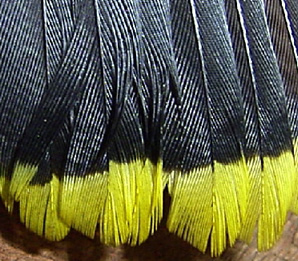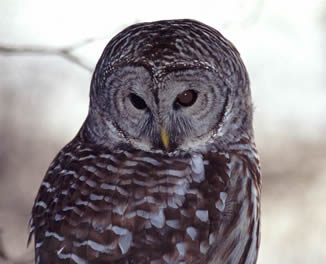

INTRODUCTION TO THE BIRDS OF
BRITISH COLUMBIA

Surfbird (Aphriza virgata). Photo by Ted Ardley.
by
Jamie Fenneman,
Wildlife Biologist and Ecologist
Visit our Bird Atlas Pages
View our bird checklists for BC
Classification
Birds are classified as the biological class Aves, which encompasses all living species of birds as well as all extinct species that have occurred since Archaeopteryx lithographica (the earliest recognized species of bird). Birds originally evolved from therapod (beast-footed) dinosaurs during the Jurassic period (150-200 million years ago). They are considered, along with crocodilians and the dinosaurs themselves, to constitute the reptile clade Archosauria, illustrating the surprisingly close relationship of birds to both dinosaurs as well as modern reptiles.
Birds are characterized by a number of features, many of which are designed to facilitate flight. First, the presence of feathers is unique to birds and allows for increased thermal regulation. Furthermore, flight would not be possible in birds without feathers, particularly feathers on the wings and tail known as “flight feathers.” Another characteristic feature of birds is a largely hollow skeleton that dramatically reduces the weight of the bird and increases the efficiency of flight. Other diagnostic features of birds include the laying of hard-shelled eggs, the modification of the front two limbs into wings (even on species which are incapable of flight), a beak with no teeth, a high metabolic rate, and a four-chambered heart (similar to mammals).

Cedar Waxwing, tail feathers. Photo by Diane Williamson.
A total of 26 orders, 225+ families, and 9,800-10,000+ species of living birds are currently recognized within Class Aves, although there is much flux in these number and some additional orders, families, and (especially) species are often recognized. The advent of advanced genetic techniques for determining relatedness of species, such as DNA-DNA hybridization, will continue to challenge some of the taxonomic dogma of the 19th and 20th centuries and, hopefully, result in a clearer picture of the evolution and classification of birds in years to come.
Bird Biodiversity in BC
A total of 510 species of birds (65 families) are known to have occurred in British Columbia over the past 150 years, which is more than any other province or territory in Canada (Table 1). This wealth of birds is due to the province’s location at the junction of several major biogeographic units (Great Basin, western cordilleran, eastern boreal, Pacific coastal, subarctic, etc.) as well as the wide range of habitats that occur. These habitats include marine and pelagic environments, coastal rainforests, dry grasslands and sagebrush, freshwater lakes and wetlands, montane and boreal forests, alpine tundra, agricultural lands, and urban areas. No other jurisdiction in Canada can boast such a diverse assemblage of habitats as B.C. Of the 510 species recorded from B.C., more than 310 are known to breed or have bred in the province and several others are suspected of breeding.
BC |
AB |
SK |
MB |
ON |
QU |
NB |
NS |
PEI |
NF |
YT |
NWT |
NU |
|
Total Species |
510 |
408 |
374 |
390 |
482 |
464 |
400 |
451 |
318 |
378 |
298 |
310 |
202 |
Table 1. Comparison of the number of bird species recorded in each of Canada’s provinces and territories, illustrating the relatively high number of species for B.C. when compared against other jurisdictions.

Stellar's Jay, BC's official bird, photo by Rod Innes
Vagrancy
The power of flight, combined with the long distances that many bird species traverse between their breeding and wintering grounds, results in many birds occurring in areas outside of their normal haunts every year. These individuals, called “vagrants” or “accidentals,” can show up hundreds to thousands of kilometers away from their normal range. For example, a Eurasian thrush called a Fieldfare (Turdus pilaris) occurred in Port Coquitlam in B.C.’s Lower Mainland in December of 2003. This bird came from either the eastern Siberian breeding population or the European breeding population and, through some unusual series of events, came to find a temporary home in B.C. The causes of vagrancy in birds are not understood, but several hypotheses have been proposed, including weather-related causes and genetic predisposition to vagrancy. In reality, several factors likely contribute to the phenomenon. Although it has been observed in other groups of animals, vagrancy is most commonly recorded in birds.

Barred Owl, photo by Paul D. Pratt
Conservation
As with any other species group, bird populations in B.C. continue to be threatened by human activities such as land management practices, urban and suburban development, draining of wetlands, and others. Not surprisingly, the south coast (particularly the Georgia Depression) and Okanagan Valley top the list of regions in the province that are under threat. Habitat loss is by far the greatest current threat to the province’s avifauna and continues to result in population declines. Breeding populations of Western Meadowlark, Lewis’s Woodpecker, Western Bluebird, and Horned Lark on the south coast have all been extirpated within the last 70 years, while others (such as Vesper Sparrow) will likely be lost soon. In the Okanagan Valley, Greater Sage-Grouse were extirpated in the early 1900s through hunting and land conversion, followed by Sharp-tailed Grouse in the mid-1900s.
Fortunately, the widespread interest in birds allows for observers to note population declines relatively quickly and, when possible, take action. Reintroduction programs for Burrowing Owls in the southern interior (which were extirpated in the late-1900s) have met with success, as have nest-box programs for the formerly near-extirpated Purple Martin population on the south coast. In fact, the Purple Martin Recovery Team has brought the species back from ~5 pairs in the 1980s to over 700 pairs today through installation of special starling-proof nest boxes. Similar schemes are currently underway for Western Bluebird in the Georgia Depression, although this program is new and significant results are still to come.
Oystercatcher, by BC artist Carolyn Wood
References
Campbell, R. Wayne et al. The Birds of British Columbia (4 volumes). UBC Press, Vancouver.
Cannings, Richard, Tom Aversa and Hal Opperman. Birds of Southwestern British Columbia. Heritage House, Victoria.
Please cite these pages as:
Author, date, page title. In: Klinkenberg, Brian. (Editor) 2023. E-Fauna BC: Electronic Atlas of the Fauna of British Columbia [www.efauna.bc.ca]. Department of Geography, University of British Columbia, Vancouver. [Date Accessed]
© Copyright 2023 E-Fauna BC.